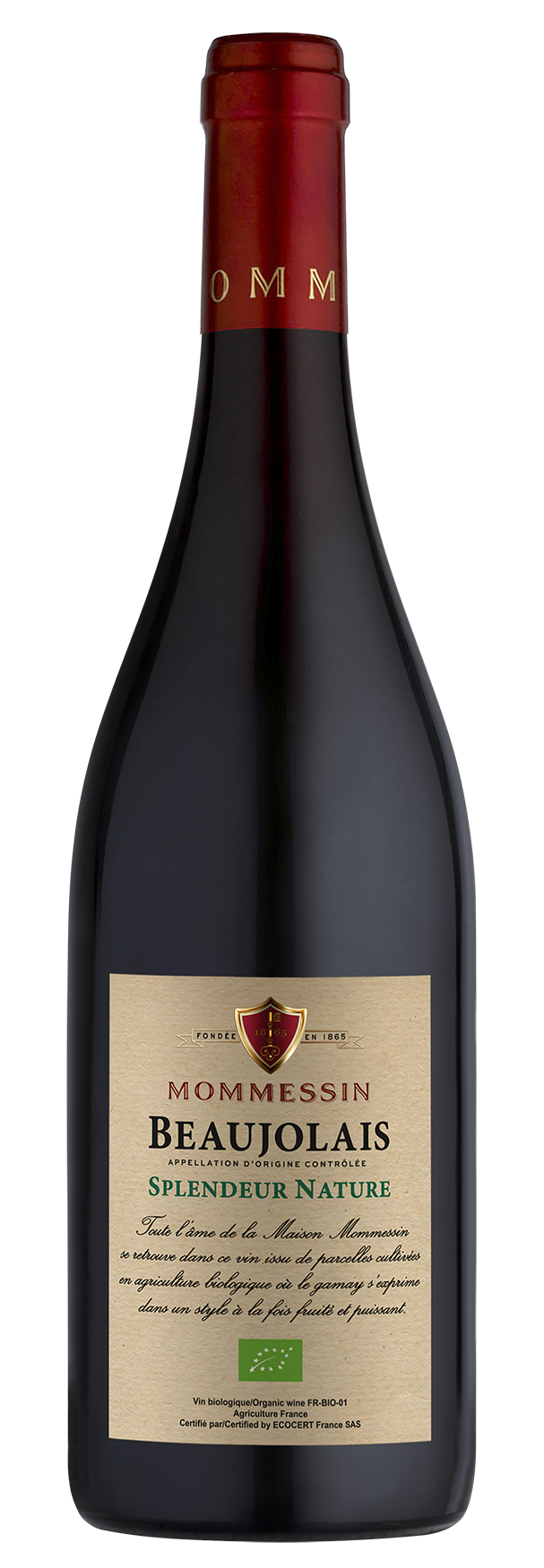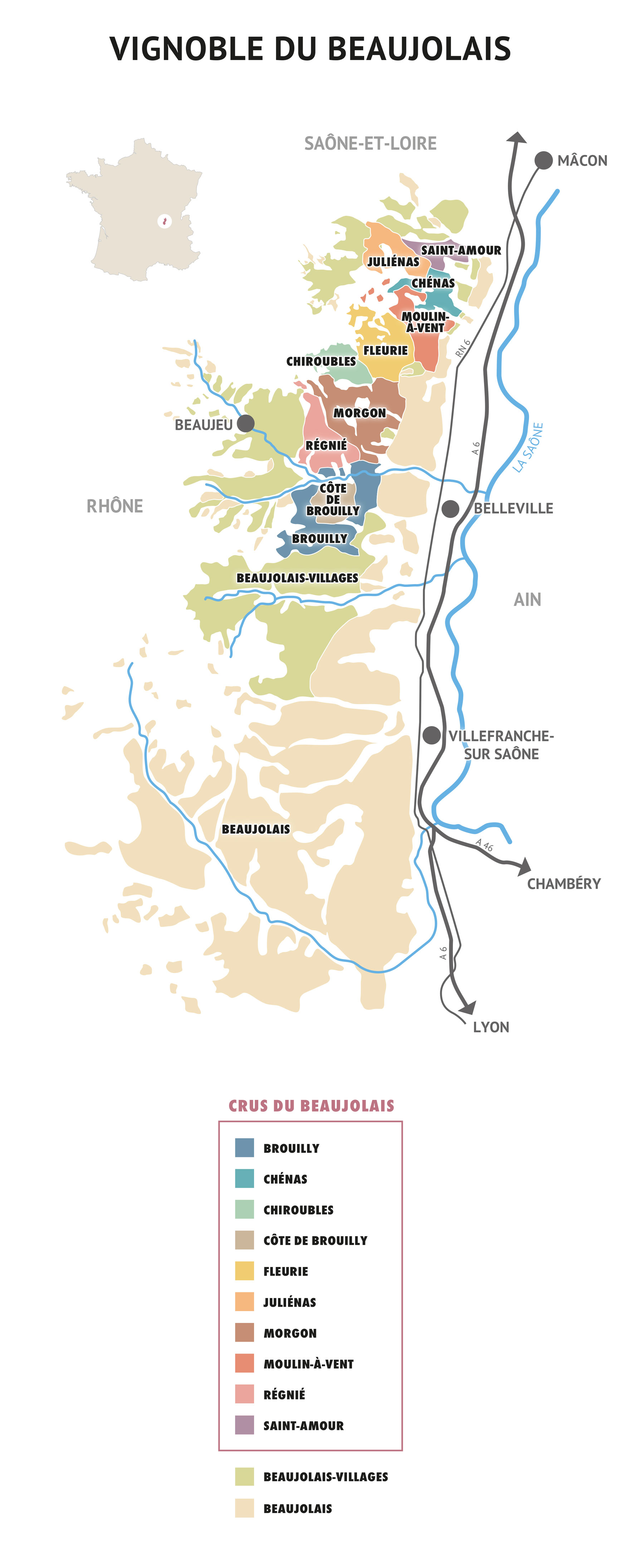BEAUJOLAIS BIO 2024
Grape varietal
100% Gamay.
Tasting notes
Colour: Beautiful, intense ruby colour.
Nose: The bouquet is equally intense, offering subtle, varied aromas of red fruit.
Palate: A fine, elegant wine that reveals a wide range of crisp fruit flavours and tremendous freshness.
Serving suggestions
Serve at a temperature of 13-14°C. (55-57°F).
Food and wine pairing
May be enjoyed simply as an aperitif, accompanied by a selection of local charcuterie or a home-made country terrine, or during a meal, accompanied by white meat, grilled food, vegetarian cuisine, savoury tarts, pasta dishes or a lightly seasoned pizza. It also goes very well with mature cheeses.
Ageing potential
Already very pleasant, this Beaujolais can easily be cellared for up to five years.
Origins
The Beaujolais appellation essentially groups together wines from the region located south of Villefranche-sur-Saône. The vineyards vary enormously, extending over 9,700 hectares overlooking the Saône plain between Mâcon and Lyon and bordered to the west by the foothills of the Massif Central.
Terroir
Our wine is made from organically grown Gamay grapes from three different plots.
Two of these consist of mainly hard limestone soil and marl slopes covered with scree with some rows of vines planted on residual clay with pieces of chert.
The vines on the third plot are planted mainly on granite with some on siliceous volcanic rock and on schist or bluish rock.
Vine and soil
- Planting density: 8,000-10,000 vines/ha
- Average age of the vines: 45 years old.
- Yield: 30hl/ha.
- Pruning: Cordon or Single Guyot.
- Vineyard management: organic agriculture.
Everything is carefully analysed: the threat of diseases, the numbers of insect pests and auxiliaries present in the plots’ agro-system, the size and number of bunches, the effect of weeds, the state of the vines’ foliage, etc.
Soil management: decavaillonnage (turning over the soil around the base of each vine), light ploughing, work between the vines.
This approach meets two objectives:
- restoring the physiological balance of the vines, the soil and the terroir,
- protection and respect of the environment.
Vinification and maturing
The Gamay grapes were sorted out in the vineyard and then, once again, at the arrival at the winery. Most of the grapes were destemmed and macerated for 8-10 days.
There are also wines produced in the traditional Beaujolais style in the blend, with semi-carbonic maceration from 5 to 8 days. This wine was aged on fine lees in stainless steel and concrete vats.
Vintage : 2024
The winter of 2023-2024 was the 3rd warmest since 1900, with a particularly mild February. Spring was marked by heavy rainfall, with a notable lack of sunshine. Despite these conditions, temperatures remained above normal. Summer alternated between hot and cool spells, with hot spells in July. These climatic variations complicated plant health management in the vineyards, but winegrowers were able to keep the situation under control.
Yields for the 2024 harvest are expected to be low and very heterogeneous, with some plots suffering from coulure and millerandage. The first pruning began in early September. Harvesting was spread over three weeks, finishing at the end of September in the latest-ripening areas.
The reds have notes of raspberry, black cherry, pear and floral scents such as lily of the valley. Initial tastings reveal fruity, elegant, supple wines with a ruby colour. The range of aromas is broad, giving an impression of deliciousness on the palate, with a lovely freshness and pleasant complexity.
The white wines are remarkably fresh and elegant. Their bouquet offers citrus notes, enhanced by subtle floral touches and aromas of pear and peach. The wine is structured by a pronounced minerality, with a lively, unctuous texture.
Awards
- April 2025 : Gold medal - Concours des Grands Vins de France - Mâcon




